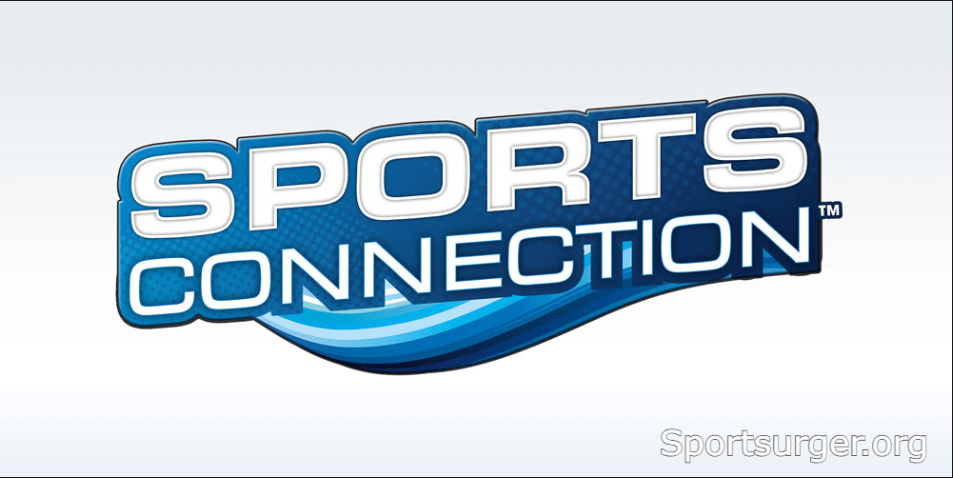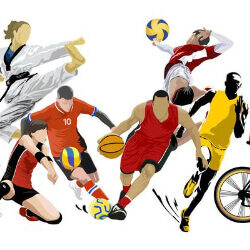Introduction:
Sports aren’t just about scoreboards anymore—they’re about sensors, streams, and smart insights that make every rep, stride, and split more meaningful. Connected Sport brings together wearables, AI, video analysis, edge computing, and cloud platforms to link athletes, coaches, venues, and fans into one data-rich ecosystem. The payoff? Faster improvements, fewer injuries, and experiences that feel personal whether you’re on the field or on your phone.
This 2025 guide breaks down the top innovations shaping Connected Sport, how to adopt them without drowning in dashboards, and what to watch next. We’ll keep it simple, practical, and actionable.
What Is Connected Sport?

Connected Sport describes the integrated stack of hardware (wearables, smart equipment, cameras), software (apps, analytics, coaching tools), and networks (Wi-Fi 6/6E, private 5G, edge computing) that collect, transmit, analyze, and act on performance and event data in real time. Think of it as a living loop:
- Sense (wearables & smart gear)
- Transmit (low-latency networks)
- Analyze (AI/ML models)
- Act (coaching cues, rehab changes, tactical tweaks)
- Engage (fan overlays, second-screen, interactive stats)
The 2025 Connected Sport Stack at a Glance
- Sensors: GNSS, IMUs, heart rate, HRV, skin temp, hydration proxies
- Vision: 4K/8K optical tracking, depth cameras, computer vision keypoints
- Networks: Wi-Fi 6/6E, private 5G, multi-access edge computing (MEC)
- Cloud & Edge: Real-time inference at the edge, longitudinal modeling in cloud
- Apps & Dashboards: Role-based interfaces for athletes, coaches, medical staff, fans
- Data Governance: Consent management, privacy controls, audit trails, retention policies
Innovation #1: Sensor Fusion Wearables Go Pro (and Amateur)
Single-sensor devices are out; sensor fusion is in. Modern wearables blend GPS/GNSS for field sports, IMUs for joint-level motion, and physiological signals (HR, HRV, RR). Why it matters:
- Cleaner Signals: Cross-validating streams reduces noise.
- Contextual Coaching: A sprint’s load is evaluated alongside fatigue markers and sleep.
- Micro-adjustments: Real-time alerts (e.g., “shorten ground contact time” or “back off intensity”) during training.
Use it for: Team sports, track, triathlon, combat sports, golf swing mapping, tennis stroke timing.
Innovation #2: Smart Fabrics and “Seamless” Biometric Kits
Textiles now embed conductive fibers and micro-sensors to monitor HR, respiratory rate, posture, and even muscle activation proxies—without bulky straps.
- Comfort & Compliance: Athletes actually wear the tech consistently.
- Granularity: Segment-specific load (e.g., upper vs lower body strain).
- Safety: Early heat stress alerts via temp and sweat-rate proxies.
Innovation #3: Computer Vision That Coaches in Real Time
AI video transforms raw footage into coaching cues:
- Auto-tracking: Player ID, speed, acceleration, deceleration, spacing.
- Technique analysis: Joint angles for squats, jumps, throws; ground contact time; foot strike.
- No wearables required: Useful for games and competitions where devices aren’t allowed.
Pro Tip: Start with one or two “keystone” metrics per athlete to prevent dashboard overload.
Innovation #4: Digital Twins for Athletes
A digital twin is a dynamic biomechanical and physiological model of an athlete:
- What-if simulations: Predict effects of training volumes, travel, sleep loss, or heat.
- Injury risk modeling: Combine workload, movement quality, and recovery trends.
- Personalization: Nutrition, recovery, and periodization tuned for the individual.
Innovation #5: Edge AI & Private 5G Inside Smart Venues
Stadiums and training centers deploy edge compute and private 5G to crunch data on site:
- Ultra-low latency: Instant replays with tracking overlays for coaches and broadcasters.
- Bandwidth relief: Less raw video shipped to the cloud, more insights delivered instantly.
- Reliability: Works even when public networks are saturated.
Innovation #6: Connected Equipment—From Smart Rackets to Barbell Sensors
Hardware is getting brains:
- Rackets, bats, clubs: Impact location, swing speed, angle of attack, sweet-spot %
- Barbell & plates: Velocity-based training (VBT) with auto load-profiling
- Footwear: Pressure maps, pronation, asymmetry detection
Coaching win: “Train the intent”—velocity targets per set reduce junk volume and improve power.
Innovation #7: Recovery Tech With Objective Feedback
Recovery is now measured, not guessed:
- Cold/heat + compression systems report dosage & adherence
- Sleep platforms sync HRV and sleep stages to flag under-recovery
- Neuromuscular readiness from jump profiling or grip strength trends
Practical takeaway: Adjust tomorrow’s load, not next week’s.
Innovation #8: Injury Prevention via Movement Quality
Beyond workload, Connected Sport quantifies movement competency:
- Landing mechanics: valgus, asymmetry, stiffness
- Sprint mechanics: overstriding, pelvic control
- Change-of-direction: decel capacity, trunk control
Teams blend screening + in-session CV to catch breakdowns before they become breakdowns.
Innovation #9: AR/VR for Skills, Strategy, and Rehab
- AR overlays: Real-time cues on form and spacing during practice.
- VR scenarios: Decision-making reps for QBs, point guards, goalkeepers.
- Rehab engagement: Gamified ROM and balance work with objective scoring.
Innovation #10: Fan-Facing Connected Experiences
- Second-screen stats: Speed, distance, shot maps, live win probabilities.
- Personalized angles: Fans pick camera feeds, track favorite players’ micro-stats.
- Shoppable moments: Context-aware offers (jersey after a highlight, training plan after a tutorial).
Innovation #11: Youth & Grassroots Go Smart (Affordably)
Lower-cost wearables and freemium video apps democratize performance tools:
- Safety first: Flag spikes in workload for growing athletes.
- Education: Bite-size insights for parents and volunteer coaches.
- Equity: Shared gear kits for clubs keep costs down.
Innovation #12: Interoperability—Ending the “Data Silo” Era
2025 marks a turning point:
- Open APIs & common schemas reduce duplicate data entry.
- Single sign-on & role-based views protect privacy and simplify access.
- “Source of truth” governance ensures consistent metrics across departments.
Rule of thumb: If a vendor can’t export your data, think twice.
Innovation #13: Ethics, Consent, and Athlete Data Rights
With great data comes great responsibility:
- Informed consent: Clear purpose, duration, who sees what.
- Minimization: Collect only what you need.
- Portability: Athletes should be able to take their data when they move.
- Red lines: No coercion; no using health data for contract leverage.
Create a data bill of rights and publish it.
How to Implement Connected Sport Without the Chaos
Step 1: Define Use Cases, Not Gadgets
Pick 2–3 priorities (e.g., hamstring injuries, decision speed, VBT) and align tech to those.
Step 2: Start Small Pilots
Limit to one team, one phase, or one venue. Assign an owner. Set success metrics.
Step 3: Build Your Data Spine Early
Choose tools with open APIs. Establish data governance, retention, and privacy policies.
Step 4: Train the Humans
Short, role-based training: what to collect, how to act on it, and when to ignore noise.
Step 5: Iterate Quarterly
Kill what doesn’t work. Double down on the 20% that drives 80% of outcomes.
Role-Specific Playbooks
For Athletes
- Wear your kit consistently.
- Learn your keystone metrics (e.g., HRV trend, jump RSI, sprint RSI).
- Give feedback—how did the session feel vs what the numbers say?
For Coaches
- One cue per athlete per drill.
- Link metrics to drills: “If COD asymmetry ↑, switch to decel patterns.”
- Celebrate process wins, not just PBs.
For Medical/Performance Staff
- Integrate subjective RPE with objective load.
- Build return-to-play gates (movement quality + load tolerance).
- Document decisions in the platform for continuity.
For Ops/IT
- SLAs for uptime, data backups, SSO.
- Map data flows and permissions.
- Plan for peak loads (game day video + fan apps).
Buying Guide: Questions to Ask Vendors
- Interoperability: Do you offer open REST APIs and webhooks?
- Security: SOC 2/ISO 27001? Role-based access? Encryption at rest and in transit?
- Latency: Edge inference options? Typical end-to-insight time?
- Validity: Independent validation studies or references?
- Usability: Role-based dashboards? Mobile offline modes?
- Ownership: Who owns raw and processed data? Export on demand?
- Support: Implementation plan, training, SLAs, and roadmap transparency.
KPIs That Actually Matter
- Availability: % sessions captured vs planned
- Adoption: Weekly active users by role
- Actionability: % sessions with a delivered coaching cue
- Outcomes: Injury days lost ↓, performance KPIs ↑, recovery adherence ↑
- Efficiency: Analyst time saved, coaching time reallocated
- Fan metrics: Session duration, engagement rate, conversion on interactive features
Mini Case Scenarios
Case 1: Soccer Club & Hamstring Strains
- Stack: GPS + IMU sprint metrics, CV decel analysis, HRV readiness
- Change: Reduced high-speed volume after travel, added decel drills
- Result: 38% reduction in soft-tissue time-loss injuries over a season
Case 2: High School Basketball
- Stack: Two fixed cameras + CV for spacing & transition; simple HR wearables
- Change: Shorter, high-quality drills with spacing cues
- Result: More consistent shooting mechanics and fewer overuse flag
Case 3: Marathoner With Heat Stress
- Stack: Smart fabric shirt, hydration prompts, environmental indexing
- Change: Adjusted pace strategy and cooling protocol
- Result: Negative split PB, no heat-related symptoms
Building a Smart Venue in 2025: A Checklist
- Private 5G / robust Wi-Fi 6E
- PTZ and fixed 4K cams with CV pipelines
- Edge compute nodes for real-time overlays
- Unified data layer + identity and consent management
- Fan app with low-latency stats and multi-angle streams
- Emergency & security integration (player health alerts, crowd analytics)
Costs & ROI—A Pragmatic View
- Starter (youth/club): $2–10k/year (cameras + basic wearables + app)
- Elite team: $50–300k/year (CV suite, wearables, edge, analyst time)
- Stadium/league: $500k–multi-million (broadcast, fan experience, security)
ROI paths: injury reduction, performance gains, staff efficiency, sponsorship activation, premium fan experiences.
Common Pitfalls (and Fixes)
- Dashboard overload: Limit KPIs by role.
- Pilot creep: Time-box trials; define exit criteria.
- No governance: Create a data council and publish policy.
- One-size-fits-all plans: Personalize thresholds and cues.
- Shiny object syndrome: Tie every purchase to a use case.
Roadmap 2025–2028: What’s Next
- On-device AI: Wearables run models locally for instant cues.
- Multimodal twins: Merge biomechanics, physiology, and mental load.
- Ambient sensing: Vision + audio + environmental data for context.
- Fairness-aware analytics: Bias checks for selection and feedback.
- Sustainable tech: Low-power sensors, greener data centers.
Quick Start: 30/60/90-Day Plan
Days 0–30
- Pick two use cases, form a squad (coach, analyst, S&C/med, athlete rep).
- Pilot one wearable and one CV workflow.
- Define 3 KPIs and a consent process.
Days 31–60
- Tune models, remove non-signal metrics.
- Add recovery tracking; publish first insights report.
- Train staff with short, repeatable sessions.
Days 61–90
- Expand to a second team/unit.
- Integrate with EHR/AMS or team app.
- Executive review: ROI, risks, roadmap.
Final Thoughts
Connected Sport in 2025 isn’t about collecting more data—it’s about making better decisions faster, protecting athletes, and delivering moments fans can feel. Start with the questions that matter, choose interoperable tools, and build habits around a few high-signal metrics. When tech becomes invisible and the insights become routine, you’ll know you’ve done it right.
FAQs: Connected Sport in 2025
Q1: Do I need both wearables and computer vision?
Not always. If competition rules restrict wearables, CV is your friend. In training, a hybrid approach is best.
Q2: How do I protect athlete privacy?
Use explicit, revocable consent; minimize data; apply role-based access; audit usage; and publish a data rights policy.
Q3: Are consumer wearables good enough?
For wellness trends (sleep, HRV), often yes. For elite performance and compliance-critical contexts, validated pro tools are safer.
Q4: What’s the fastest win for a small budget?
Start with video + simple CV for technique, and a basic HR/HRV tracker for readiness. Focus on one or two cues per athlete.
Q5: How do I avoid analysis paralysis?
Define questions first, pick 3–5 KPIs per role, and schedule weekly “decision meetings” where data must drive a choice.
Q6: Will AI replace coaches?
No. AI surfaces patterns; coaches translate them into human change—motivation, communication, and context.
Q7: How soon can we see ROI?
Often, within one season, if you target a measurable pain point (e.g., soft-tissue injuries, wasted drill time, fan engagement).
Q8: Is private 5G necessary?
Not always. For dense venues or strict latency/reliability needs, it’s a differentiator. Many clubs thrive with robust Wi-Fi 6E.
Q9: What about fairness and bias in models?
Audit models, monitor disparities across groups, and build governance that includes athlete representation.
Q10: How do we scale after pilots?
Standardize data schemas, centralize identity/permissions, and create enablement playbooks for each role.

